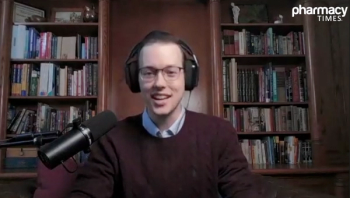
You Are Probably Getting Too Much Sodium
Many of us take in too much sodium, which can put us at an increased risk for health problems.
Many of us take in too much sodium, which can put us at an increased risk for health problems. Your body needs only a very small amount of sodium—an essential nutrient required to maintain a balance of bodily fluids and proper muscle and nerve function.
Do you know how much sodium you take in or need each day? Sodium is both found in salt and occurs naturally in many foods, even those that don’t taste salty. You don’t have to sprinkle table salt, also called sodium chloride, on your food to get too much sodium. In fact, most of the sodium we eat each day sneaks up on us in prepared and processed foods, which has prompted the FDA to take steps to lower the amount of sodium added to the foods we buy. In July of this year, the FDA released guidance for manufacturers and restaurants on reducing the amount of sodium they add.
WHY TOO MUCH SODIUM IS BAD
Your kidneys filter your blood and remove excess fluid, using osmosis to draw the extra water out and move it into a collecting channel that leads to your bladder, where it becomes urine. This process involves a delicate balance of sodium and potassium. If your sodium intake is too high, this raises the amount of sodium in your bloodstream, which pulls water into your blood vessels and disrupts this delicate balancing act. The increased volume of blood inside your blood vessels causes blood pressure (BP) to rise. High BP (also called hypertension) strains your kidneys and can cause diseased kidneys to worsen. Excess sodium in the body also forces the heart to work harder, which can increase the risk for heart disease and stroke.
High BP affects an estimated 1 in 3 Americans, according to the CDC. In African Americans, high BP affects almost 1 in 2 individuals. The effects of salt and sodium on BP tend to be greater in African Americans, individuals older than 50 years, and individuals with high BP, diabetes, or kidney disease.
NEW SODIUM TARGETS
Ninety percent of Americans, including children and adolescents, consume more sodium than recommended, according to the CDC. Today, the average American takes in a whopping 3400 mg of sodium per day. That’s almost 50% more than what is generally recommended when you consider that the sodium intake goal for adults and older teens is 2300 mg per day. And those who have been diag- nosed with high BP or who have prehypertension may have even lower sodium intake goals.
The recommended upper limits of sodium per day for children are as follows:
• Aged 9 to 13 years: 2200 mg
• Aged 4 to 8 years: 1900 mg
• Aged 1 to 3 years: 1500 mg
FOODS THAT ARE HIGH IN SODIUM
Many prepared and processed foods contain high amounts of sodium. These foods include breads, natural and processed cheeses, deli meats, sand- wiches (including hamburgers and hot dogs), snacks (popcorn, chips, pretzels, and crackers), pizza, pasta dishes, salad dressings, and soups. It is important to remember that just because you don’t taste the salt, that doesn’t mean the food is not high in sodium. Even sweet desserts or sugary cereals can contain lots of sodium. You have to keep your daily totals in mind. Even if a single food doesn’t contain too much sodium, eating that food several times a day can put you at risk of getting too much salt.
TIPS TO CUT DOWN SALT INTAKE
• Speak with a dietician or your health care pro- vider about your nutritional goals. A dietician can create an eating plan that will help balance your sodium intake and reduce your risk for high BP.
• Keep a food diary to track the amount of sodium you are consuming. The goal is to reduce your sodium intake, not to keep an exact tally.
• Check the nutrition facts label for sodium content because not all foods high in sodium taste salty. Also, check for nutrient claims on food and beverage packages (Table).
• Prepare your own food when possible, and limit your intake of fast foods and convenience foods. About 75% of dietary sodium comes from eating packaged and restaurant foods.
• Flavor your foods with fresh herbs and spices instead of salt. If you are taking certain medications to treat high BP, salt substitutes are not recommended. If you have any questions about what kind of seasoning you can use, be sure to ask your health care provider or pharmacist.
As you reduce the amount of sodium you consume, it’s likely that your taste for sodium will slowly decrease. Before you know it, you probably won’t even miss it.
Beth Bolt is a freelance health and science writer based in Northern California. She’s on Twitter: @beth_bolt.
Newsletter
Stay informed on drug updates, treatment guidelines, and pharmacy practice trends—subscribe to Pharmacy Times for weekly clinical insights.


















































































































































































































